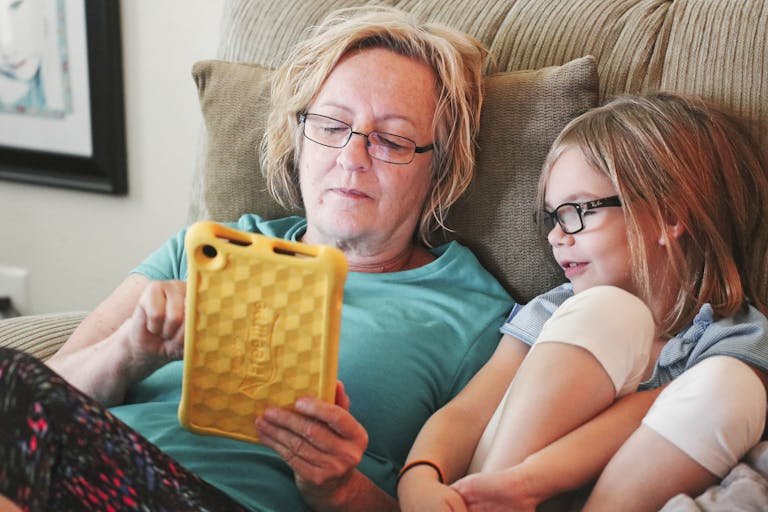
Pursuing certification as a Registered Behavior Technician (RBT) is a significant undertaking. It represents a commitment to entering the field of behavior analysis, a discipline dedicated to understanding and improving behavior through scientific principles. This role carries substantial responsibility, as RBTs directly impact the lives of the individuals they serve, often vulnerable populations requiring specialized support.
As an RBT myself, I understand the dedication required. This guide provides a formal overview of the process mandated by the Behavior Analyst Certification Board (BACB) for obtaining and maintaining the RBT credential. It is intended for individuals seriously considering this path, whether as a first step in a behavior analytic career or to better understand the role within a care team.
Defining the Registered Behavior Technician (RBT)
The BACB defines the RBT as a paraprofessional who practices under the close, ongoing supervision of a designated BACB certificant (BCBA, BCaBA, or FL-CBA). This supervisory relationship is fundamental; RBTs do not practice independently. Their primary function is the direct implementation of behavior-analytic services as prescribed by their supervisor.
This distinguishes the RBT from the supervising BCBA or BCaBA, who holds advanced credentials, designs assessment and intervention plans, and may practice independently according to their certification level. The RBT role is focused specifically on the precise execution of these plans, grounded in the principles of Applied Behavior Analysis (ABA) – the science of learning and behavior.
Core Responsibilities of an RBT
The duties of an RBT demand precision, ethical conduct, and adherence to scientifically validated procedures. Key responsibilities include:
- Implementing Behavior Intervention Plans: Executing skill-acquisition and behavior-reduction protocols designed by the supervisor with fidelity. This involves direct interaction with clients to teach adaptive behaviors and manage challenging behaviors according to the plan.
- Systematic Data Collection: Accurately and consistently recording quantitative data on client behavior during service delivery. This objective data is crucial for monitoring progress and informing the supervisor’s clinical decisions.
- Communication with Supervisor: Maintaining regular, clear, and objective communication regarding client progress, implementation challenges, and relevant environmental variables.
- Assisting with Assessments: Supporting the supervisor in conducting specific assessments, such as preference assessments or collecting descriptive data for functional behavior assessments, as directed.
- Documentation: Generating objective, concise, and timely session notes that accurately reflect services provided and client responses, meeting clinical, legal, and organizational requirements.
- Adherence to Professional and Ethical Standards: Strictly complying with the BACB’s RBT Ethics Code, maintaining professional boundaries, ensuring client dignity, and practicing within the defined scope of competence and duties.
This role requires meticulous attention to detail, strong observational skills, and the ability to follow complex protocols consistently.
Typical Work Environments
RBTs deliver services across diverse settings where ABA is applied, including:
- Educational institutions (Schools)
- Clinical centers specializing in ABA
- Client residences (In-home therapy)
- Residential treatment facilities or group homes
- Occasionally, hospital or other community settings
Client populations vary widely in age (from early childhood through adulthood) and diagnosis (e.g., Autism Spectrum Disorder, developmental disabilities, behavioral disorders). Adaptability and a strong grounding in behavioral principles are essential.
The Mandate for BACB Supervision
It is critical to reiterate that RBT practice is contingent upon continuous, qualified supervision. An RBT cannot provide behavior-analytic services without fulfilling the BACB’s ongoing supervision requirements. This structure is not merely procedural; it is a core component of ethical practice and quality control within the field.
Supervision ensures that services align with the designed plan, allows for ongoing training and feedback for the RBT, provides clinical oversight, and ultimately safeguards client welfare. For anyone entering this role, understanding and respecting the supervisory relationship is paramount.
The Formal Pathway to RBT Certification
The BACB has established a structured, multi-step process for attaining RBT certification. Each requirement must be met according to BACB standards.
Table 1: RBT Certification Eligibility & Key Steps Checklist
| Step/Requirement | Specifics/BACB Standard | Notes/Timeline Considerations |
|---|---|---|
| 1. Age | Be at least 18 years old. | Must be met at time of application. |
| 2. Education | Possess a minimum of a high school diploma or its national equivalent. | Proof of education (e.g., diploma, transcript) required for application. |
| 3. Residency | Reside in a country where the BACB currently accepts applications (e.g., United States). | Refer to the BACB website for the current list of eligible countries. |
| 4. 40-Hour Training | Complete a 40-hour training program based on the RBT Task List (2nd ed.) or RBT Test Content Outline (3rd ed. from 2026) meeting BACB requirements. | Must be completed in no less than 5 days and no more than 180 days. Training certificate required. |
| 5. Background Check | Pass a criminal background check and abuse registry check meeting BACB standards. | Must be completed no more than 180 days prior to submitting the RBT certification application. Standards comparable to those for professions with similar client contact. |
| 6. Initial Competency Assessment | Pass an RBT Initial Competency Assessment conducted by a qualified BACB certificant (BCBA, BCaBA) who meets supervisor training requirements. | Must be completed after the 40-hour training and no more than 90 days prior to submitting the RBT certification application. Verifies practical skills. Note: Effective Jan 1, 2025, specific affiliation requirements apply between applicant, assessor, and client organization. |
| 7. BACB Application | Create a BACB account and submit a complete RBT Certification Application with all required documentation and attestations. | Requires payment of a nonrefundable application fee. Applications remain active for 90 days. |
| 8. RBT Examination | Successfully pass the RBT certification examination administered by Pearson VUE. | BACB application approval required to schedule. Exam fee paid to Pearson VUE. Must pass within one year of application approval (maximum 8 attempts). Note: Exam content based on RBT Test Content Outline (3rd ed.) begins Jan 1, 2026. |
- Step 1: Foundational Eligibility: Minimum age of 18, high school education (or equivalent), and residency in an eligible country.
- Step 2: 40-Hour Training: Completion of a BACB-compliant training program covering the RBT Task List/Test Content Outline within the 5-to-180-day timeframe.
- Step 3: Background Verification: Satisfactory completion of required background checks within 180 days before application submission.
- Step 4: Initial Competency Assessment: Demonstration of practical skills evaluated by a qualified BACB certificant post-training and within 90 days before application submission. Requires careful attention to the 2025 affiliation rule regarding the assessor, applicant, and client organization.
- Step 5: Formal Application: Submission of the online application via the BACB website, including all necessary documentation (training certificate, competency assessment, attestation) and the application fee ($50 as of Jan 2025).
- Step 6: Certification Examination: Passing the standardized RBT examination ($45 fee to Pearson VUE as of Jan 2025) within one year of application approval. Awareness of the January 1, 2026, transition to the 3rd Edition Test Content Outline is essential for candidates testing near or after this date.
Financial Considerations for RBT Certification
Candidates should anticipate several costs associated with obtaining RBT certification. These can vary, particularly fees for training and the competency assessment, which are set by providers. Employer sponsorship may be available and should be investigated.
Table 2: Estimated Cost Breakdown for RBT Certification
| Expense Item | Typical Cost Range | Notes |
|---|---|---|
| 40-Hour Training Course | $0 – $1,000+ | Varies significantly. Evaluate inclusions (e.g., study aids, assessment support). |
| BACB Application Fee | $50 (non-refundable) | Fixed fee paid to the BACB. |
| RBT Exam Fee | $45 | Fixed fee paid to Pearson VUE per attempt. |
| Background Check | $30 – $60 | Variable based on location and vendor. |
| Initial Competency Assessment Fee | $50 – $500+ | Highly variable; potentially covered by employer or included in training packages. |
| Study Materials (Optional) | $20 – $100+ | Costs for supplementary practice exams, guides, etc. |
| Estimated Total Initial Cost | $195 – $1,655+ | Excludes the mandatory annual renewal fee ($35) required after certification. |
Prospective candidates should conduct thorough research on provider fees and explore potential employer support to determine the total financial commitment.
The 40-Hour RBT Training Requirement
This mandatory training provides the foundational knowledge for RBT practice. The BACB mandates specific standards for recognized training programs:
- Curriculum: Must align with the current RBT Task List (2nd ed.) or the RBT Test Content Outline (3rd ed.) for exams starting Jan 1, 2026.
- Ethics & Supervision Content: Minimum 3 hours on the RBT Ethics Code (2.0) and 1 hour on BACB supervision requirements.
- Duration & Timeline: At least 40 hours total, completed in no less than 5 days and no more than 180 days.
- Instructional Method: Must be instructor-led (can be live or asynchronous via interactive modules/video), not solely based on static materials.
- Trainer Qualification: Designed and overseen by a qualified BACB certificant (BCBA/BCaBA) who has completed the BACB’s 8-hour supervision training.
Quality training programs often incorporate elements of Behavioral Skills Training (BST) – instruction, modeling, rehearsal, and feedback – and utilize engaging formats like video models and interactive quizzes. A compliant certificate of completion is required for the BACB application.
Selecting a 40-Hour RBT Training Program
Choosing an appropriate training program requires careful evaluation based on several criteria:
- BACB Compliance: Verification that the program meets all current BACB standards.
- Content & Curriculum: Comprehensive coverage of the required RBT Task List/Test Content Outline domains.
- Instructional Quality: Oversight by qualified personnel; use of effective teaching methods (e.g., BST).
- Learning Platform: User-friendliness, engagement level, and technical reliability (for online courses).
- Cost & Included Value: Total price relative to included resources (e.g., study aids, assessment support).
- Reputation & Outcomes: User reviews and, if available, verifiable RBT exam pass rates for program graduates.
- Supplementary Resources: Availability of practice exams, study guides, etc.
The following table compares selected online providers based on available information. Candidates must verify details directly with providers, as offerings, prices, and compliance status can change.
Table 3: Comparison of Selected Online 40-Hour RBT Training Programs
| Provider Name | Price (USD) & Inclusions | BACB Compliance (Task List ed.) | Key Features | Reported Pass Rate (Source/Year) | Noteworthy Aspects | Potential Considerations |
|---|---|---|---|---|---|---|
| Autism Partnership Foundation (APF) | Free | 2nd Ed. | Practice exams included. | 69% (12,203 takers) 17 | No cost barrier. | Historically lower pass rate vs. some paid options; may lack comprehensive study tools. 17 |
| CentralReach | ~$249 | 2nd Ed. | Practice exams, study group access. BACB-compliant curriculum. | 80% (12,061 takers) 17; Over 85.5% (2021 RBT applicants in CR program) 23 | Reputable provider with strong pass rates; employer access common. 24 | Base package may lack extensive study guides. 17 |
| Relias | ~$99 | 2nd Ed. | One practice exercise included. | 82% (7,319 takers) 17 | Competitive pricing, good reported pass rate. | Limited included support tools compared to some platforms. 17 |
| Behavior University | Varies 19 | 2nd Ed. | Self-paced, video modeling, quizzes, practice test. Designed by BCBA-Ds. Organizational tools. | Not specified in 19 | Focus on doctoral-level design, practical tools; suited for organizations. 19 | Pricing requires direct inquiry. |
| FIT / ABA Technologies | ~$149 (individual); group discounts | 2nd Ed. | 100% online, quizzes, final assessment. University affiliation. | Not specified in 25 | Affordable option with university backing. 25 | Pass rate data not readily available in provided sources. |
| ATCC | ~$29/week or $99/month subscription (course); Full program price varies. | 2nd Ed. (2025 updates) | AI Chatbot, mock exams. Comprehensive packages may cover assessment, background check, etc. 21 | Not specified in 21 | Flexible pricing models; bundled options for multiple steps. | Full package cost can be significant; pass rate data not specified. |
| Jigsaw Training | Free (course); Optional paid upgrade for certificate, practice exams, resources. | RBT 2.0 Task List | Self-paced, interactive, AI tutor. Upgrade offers extensive practice exams. | Not specified in 17 | Free core training available; affordable upgrade for additional support. 17 | Certificate and comprehensive study tools require payment. 17 |
| Behavior Webinars | ~$100-$160 | 2nd Ed. | Interactive format, immediate certificate. | 79% (1,307 takers) 17 | Reportedly engaging; generally positive user feedback. 20 | Practice exams/guides often optional add-ons, increasing total cost. 17 |
| UTSA | ~$349 | Assumed 2nd Ed. | 5-week virtual program, limited synchronous sessions (10 hours total). | Not specified in 28 | University affiliation; structured format with some live contact. 28 | Higher price point for primarily asynchronous content; fixed schedule may not suit all. 28 |
A thorough cost-benefit analysis considering program quality, included resources, and individual learning needs is recommended over selecting based solely on price.
The RBT Initial Competency Assessment
This assessment is a critical verification of practical skills. It occurs after the 40-hour training and within 90 days prior to application submission.
- Purpose: To evaluate the candidate’s ability to competently perform tasks specified in the RBT Task List (2nd ed.).
- Structure: Covers domains like Measurement, Assessment, Skill Acquisition, Behavior Reduction, and Professionalism.
- Methods: Uses a combination of direct observation with a client (mandatory for at least three specified tasks), role-playing scenarios, and interviews, as designated for each task item.
- Standard: Requires demonstration of 100% competence across all assessed items. Assessors provide corrective feedback for errors, and candidates must re-demonstrate the specific task(s) until proficiency is achieved before the assessment can be finalized.
Preparation: Candidates should thoroughly review the RBT Initial Competency Assessment packet (available from BACB), revisit training materials, and, if possible, practice skills under supervision.
Finding an Assessor: Locating a qualified BACB certificant (BCBA/BCaBA meeting supervisor requirements) is crucial.
- Employer: The most common pathway, particularly given the 2025 rule requiring affiliation between the assessor, applicant, and the organization serving the client involved in the assessment.
- Training Provider: Some programs may offer or facilitate assessment services.
- Local Providers/Networking: Inquiring with local ABA agencies.
- BACB Registry: May be used, but availability for external assessments can be limited.
The 2025 rule emphasizes the practical link between certification requirements and employment or formal affiliation with a service-providing entity.
The RBT Certification Examination
Passing this examination is the final requirement for certification.
- Administration: Computer-based test administered at authorized Pearson VUE centers.
- Format: 85 multiple-choice questions (75 scored, 10 unscored pilot items), with a 90-minute time limit.
- Content: Currently based on the RBT Task List (2nd ed.), covering six main domains. Effective January 1, 2026, content will be based on the RBT Test Content Outline (3rd ed.). Candidates must prepare using the correct document based on their anticipated test date.
Preparation Strategies:
- Master BACB Documents: Thorough study of the applicable RBT Task List/Test Content Outline and the RBT Handbook is essential.
- Utilize Reputable Study Aids: Consider quality study guides, flashcards, and practice exams that align with current BACB standards.
- Take Practice Exams: Familiarize oneself with question formats, pacing, and identify knowledge gaps.
- Focus on Application: Prepare for scenario-based questions requiring the application of concepts, not just recall of definitions.
- Review Training Materials: Consolidate knowledge from the 40-hour course.
Scoring and Retake Policy:
- Results: Unofficial results are typically provided immediately at the testing center; official results are confirmed by the BACB via email/online account.
- Scoring: Uses a scaled score method determined by subject-matter experts; the specific passing score is not published by the BACB.
- Retakes: Candidates who do not pass may reapply to test after a 7-day waiting period. A maximum of eight attempts is allowed within the one-year eligibility period following application approval. Each attempt requires payment of the exam fee to Pearson VUE.
Maintaining RBT Certification: Ongoing Obligations
RBT certification requires continuous adherence to BACB standards beyond initial attainment. Failure to meet these requirements will result in loss of the credential.
- Annual Renewal:
- Submission of an RBT Renewal Application via the BACB account before the certification expiration date.
- Completion of the RBT Renewal Competency Assessment under the supervision of a qualified RBT Supervisor within 45 days prior to the expiration date.
- Payment of the annual renewal fee ($35 as of Jan 2025).
- Ongoing Supervision:
- RBTs must maintain an ongoing professional relationship with a responsible RBT Supervisor (qualified BCBA/BCaBA).
- Receive supervision for a minimum of 5% of the hours spent providing behavior-analytic services each calendar month.
- Have at least two real-time, face-to-face (in-person or synchronous online) contacts with the supervisor monthly.
- During at least one of the monthly supervisory contacts, the supervisor must observe the RBT providing services with a client.
- Compliance with the RBT Ethics Code (2.0):
- Absolute adherence to all tenets of the current RBT Ethics Code is mandatory. This includes responsibilities related to competence, integrity, client welfare, confidentiality, professional relationships, and accurate reporting to the BACB and supervisor.
These maintenance requirements are essential for ensuring continued competence, ethical practice, and the protection of consumers receiving ABA services.
Essential Resources for RBT Candidates and Certificants
Accessing accurate and current information is vital throughout the RBT certification process and career.
- Behavior Analyst Certification Board (BACB) Website (bacb.com): The definitive source. Contains the official RBT Handbook, RBT Task List/Test Content Outline, RBT Ethics Code, policy updates, FAQs, and certificant registry. Regular review is necessary as standards and documents are updated.
- Study Materials: Resources from reputable 40-hour training providers or third-party sources (e.g., study guides, practice exams). Candidates must ensure materials align with the current BACB requirements applicable to their exam date.
- Supervisor/Assessor: Primarily secured through employment with an ABA service provider, potentially facilitated by training programs, or identified through professional networking within the local ABA community.
Bottom line
Achieving and maintaining Registered Behavior Technician certification is a serious commitment that requires diligence, adherence to rigorous standards, and a dedication to ethical conduct. The pathway involves meeting specific eligibility criteria, completing mandated training and assessments, passing a standardized examination, and fulfilling ongoing supervision and renewal requirements.
This role serves as a critical entry point into the field of behavior analysis, providing the opportunity to directly implement interventions that produce meaningful behavioral change under qualified supervision. While demanding, the RBT position offers a significant opportunity to contribute positively to the lives of individuals receiving behavior-analytic services. Individuals pursuing this credential must approach the process with the gravity it deserves, utilizing official resources and ensuring compliance with all BACB mandates.
IMPORTANT LINKS
Mock Exam No. 1 (No. 2 is coming soon)
Behavior Analyst Certification Board (BACB) Main Website: The primary source for all official information, standards, and updates regarding RBT certification.
RBT Handbook: This is the definitive guide outlining all requirements for eligibility, application, examination, maintenance, and policies. Always ensure you are using the most current version.
- https://www.bacb.com/wp-content/uploads/2022/01/RBTHandbook_241226-a.pdf (Note: Link points to the version available as of early 2025 search results; check the BACB site for the absolute latest version under RBT resources.)
RBT Task List (2nd ed.) / Test Content Outline (3rd ed.): These documents define the knowledge and skills covered in the training and examination. (The 3rd ed. outline applies to exams starting Jan 1, 2026).
- Task Lists Page: https://www.bacb.com/task-lists/ (Find the RBT documents here)
- RBT 2026 Requirements/Outline (Direct link might change, access via main site or RBT section): https://www.bacb.com/wp-content/RBT-40-hr-Training-Requirements (Link from search for 2026 requirements)
RBT Ethics Code (2.0): The mandatory ethical standards for all RBTs and applicants.
- https://www.bacb.com/wp-content/uploads/2020/05/RBT-Ethics-Code_190227.pdf (Link from search results)
BACB Certificant Registry/Verification: Used to verify the status of BACB certificants (including RBTs and potential supervisors).
Pearson VUE (BACB Exam Information): The testing service that administers the RBT certification exam. Information about scheduling, locations, and testing policies can often be found here.
- General Pearson VUE site (navigate to test sponsor ‘BACB’): https://home.pearsonvue.com/
Association for Behavior Analysis International (ABAI): The primary membership organization for those interested in the science and practice of behavior analysis.





